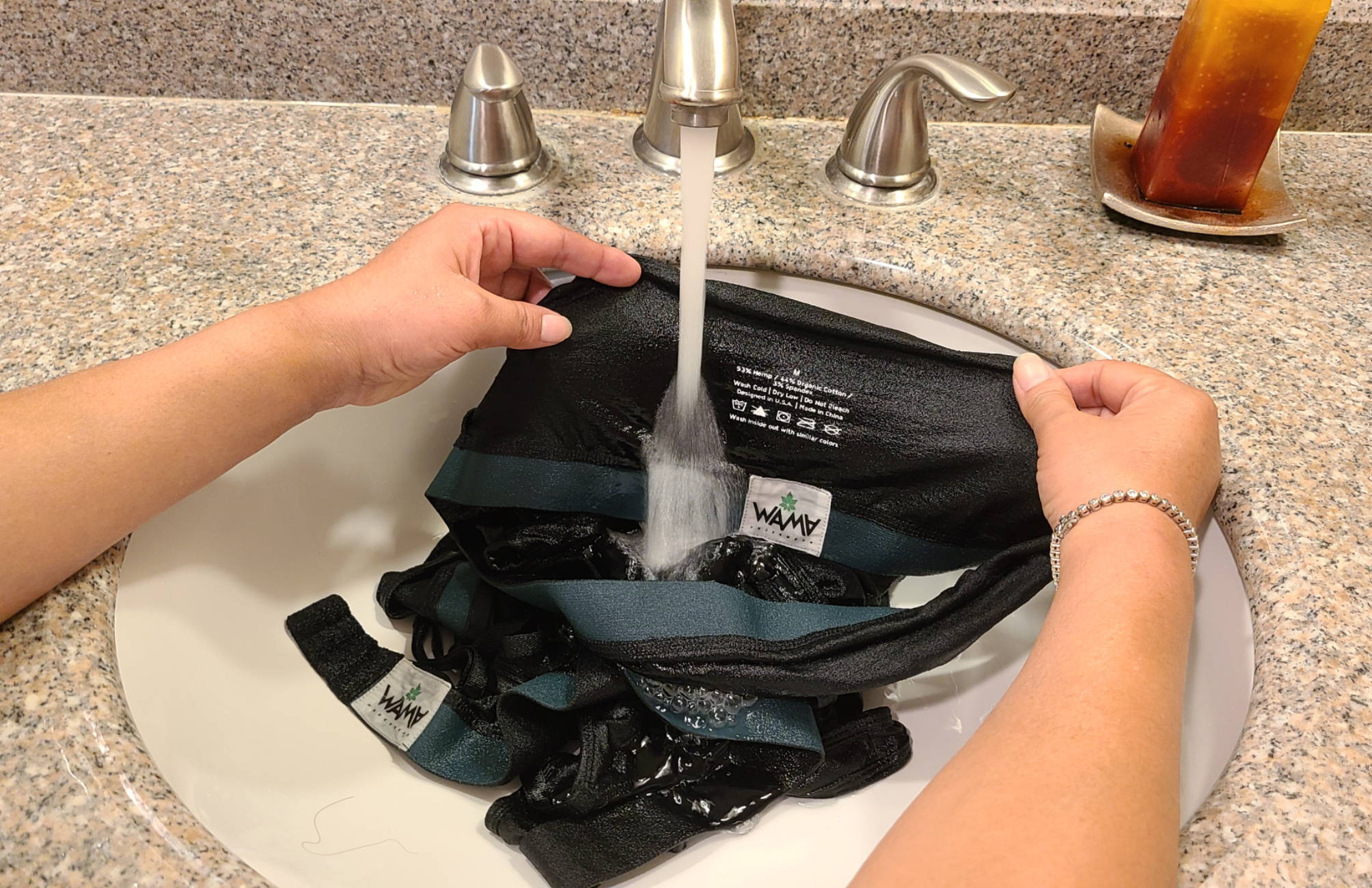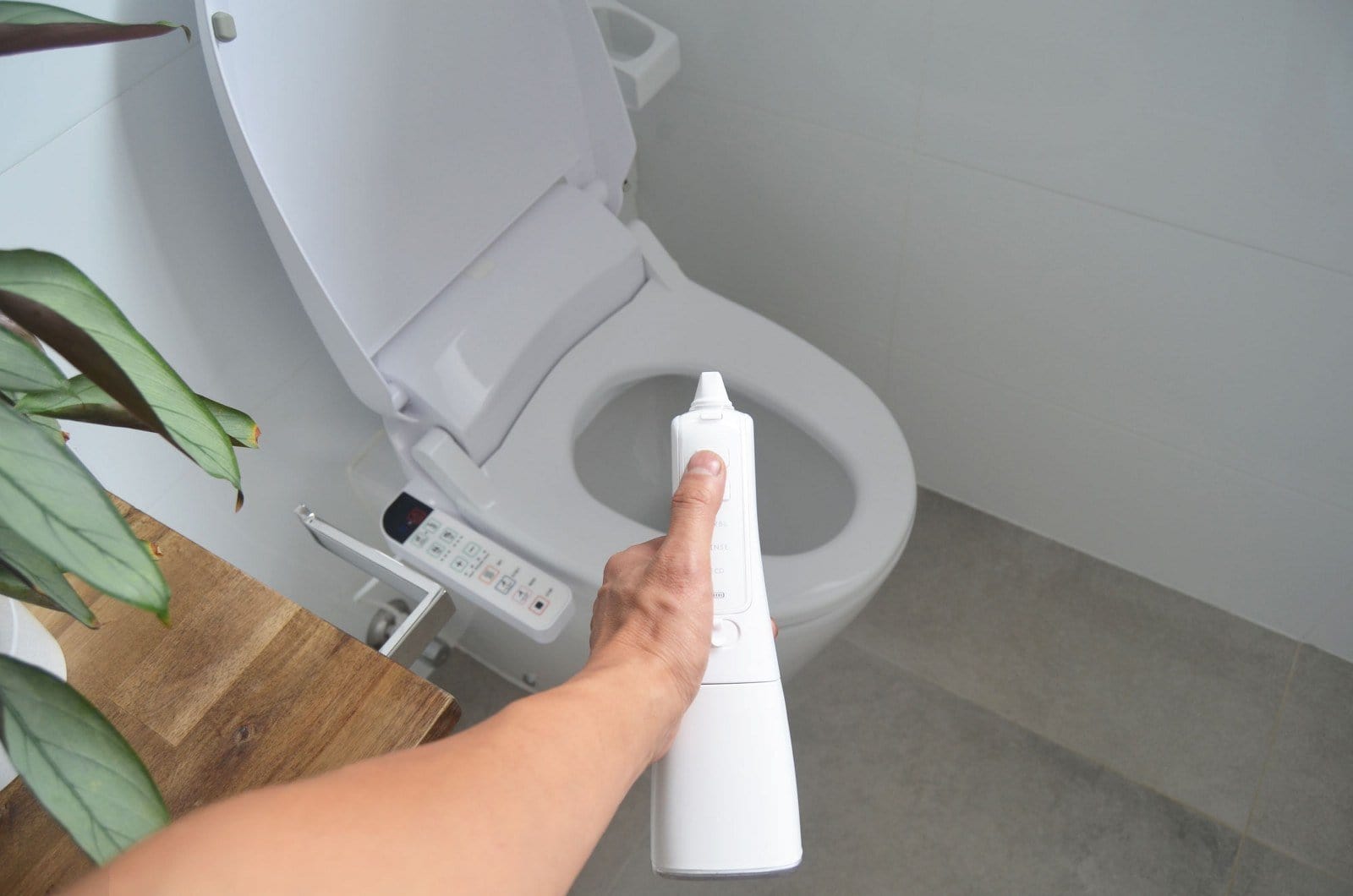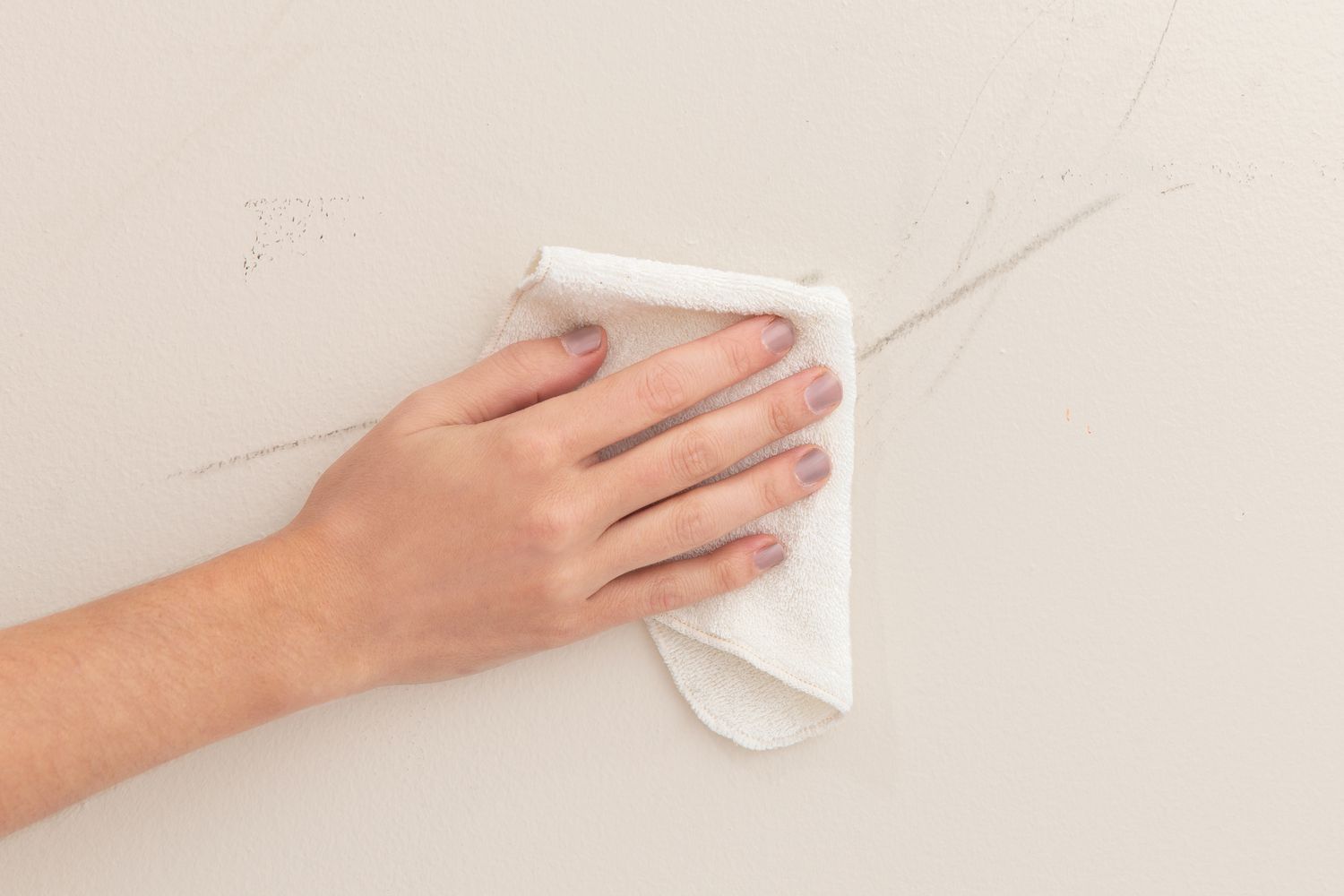Home>How-to Guides>For All>How To Clean Skid Marks Without Brush


For All
How To Clean Skid Marks Without Brush
Published: July 31, 2023
Discover a convenient and effective method for cleaning stubborn skid marks without the need for a brush. Suitable for all surfaces, this easy-to-follow guide will leave your space spotless!
(Many of the links in this article redirect to a specific reviewed product. Your purchase of these products through affiliate links helps to generate commission for Under-tec.com, at no extra cost. Learn more)
Table of Contents
How To Clean Skid Marks Without Brush
Skid marks, whether on clothing or other surfaces, can be stubborn and unsightly stains that are difficult to remove. However, you don’t always have to rely on a brush to get rid of them. With the right materials and techniques, you can effectively clean skid marks without the need for a brush. In this article, we will explore several methods that can help you tackle this issue.
Before we delve into the methods, it is essential to note that the effectiveness may vary depending on the type of fabric or surface you are dealing with. It’s always a good idea to test the cleaning solution on a small, inconspicuous area first to ensure that it doesn’t cause any damage or discoloration.
Method 1: Using Vinegar and Baking Soda
Vinegar and baking soda are powerhouse cleaners that can effectively remove skid marks. Begin by dampening the stained area with water. Then, apply vinegar onto the stain and gently rub it in using a cloth or sponge. Let it sit for a few minutes before sprinkling baking soda over the vinegar-soaked area. Scrub the stain gently, and then rinse with water.
Method 2: Using Hydrogen Peroxide and Dish Soap
An effective blend of hydrogen peroxide and dish soap can work wonders on skid marks. Mix equal parts of hydrogen peroxide and dish soap in a bowl. Apply the mixture directly to the stain and let it sit for a few minutes. Gently scrub the stained area using a cloth or sponge, and then rinse thoroughly.
Method 3: Using Lemon Juice and Salt
Lemon juice, known for its natural bleaching properties, can be combined with salt to effectively remove skid marks. Squeeze fresh lemon juice onto the stained area, ensuring it is completely saturated. Sprinkle salt over the lemon juice and let it sit for a few minutes. Gently scrub the stain using a cloth or sponge, and then rinse with water.
Method 4: Using Ammonia and Water
If the skid marks are particularly stubborn, a mixture of ammonia and water can do the trick. Dilute ammonia with water, using a 1:1 ratio, and apply it directly to the stain. Allow it to sit for a few minutes, then gently scrub the area with a cloth or sponge. Rinse thoroughly with water.
Method 5: Using Commercial Stain Removers
Commercial stain removers, specifically designed to tackle tough stains, can be a quick and effective solution for removing skid marks. Follow the instructions provided on the product packaging for best results.
Remember to always read and follow the care instructions for the fabric or surface you are cleaning. Additionally, avoid using bleach on colored fabrics, as it may cause discoloration.
By trying these methods, you can effectively clean skid marks without the need for a brush. Remember to be patient and gentle when working on the stain, and repeat the process if necessary. With a little persistence, you can restore your clothing and surfaces to their original clean condition.
Introduction
Skid marks can be an unwelcome and unsightly presence on clothing or various surfaces. They can come from a variety of sources, such as grease, oil, food stains, or even bodily fluids. Many people might immediately think they need a brush or scrubbing tool to tackle these stubborn marks. However, there are effective methods to clean skid marks without the need for a brush.
In this article, we will explore different techniques and materials that can help you successfully remove skid marks. Whether you are dealing with clothing stains or marks on other surfaces, we will provide you with a range of options to effectively clean without relying on a brush.
The methods we will discuss utilize common household ingredients, such as vinegar, baking soda, hydrogen peroxide, lemon juice, salt, and ammonia. These natural cleaning agents can have powerful stain-removing properties when used in the right combination.
It is important to note that the effectiveness of these methods may vary depending on the type of fabric or surface you are working with. It is always a good idea to do a patch test on a small, inconspicuous area to ensure that the cleaning solution doesn’t cause any damage or discoloration.
By implementing these alternative cleaning methods, you can effectively remove skid marks without the use of a brush. Not only will you be able to save time and effort, but you will also be able to restore your items to their original, clean condition. So, let’s dive into the various methods and discover how to eradicate skid marks with ease.
Necessary Materials
Before diving into the various methods of cleaning skid marks without a brush, it’s important to gather the necessary materials. Having these items on hand will ensure a smooth and efficient cleaning process. Here are the essential materials you’ll need:
-
Vinegar: This common household ingredient has acidic properties that can help break down and remove skid marks.
-
Baking soda: Known for its cleaning and deodorizing abilities, baking soda is a versatile ingredient that can help lift and eliminate stains.
-
Hydrogen peroxide: A mild bleach alternative, hydrogen peroxide can be effective in tackling tough stains.
-
Dish soap: Look for a dish soap with grease-cutting abilities, as it can be particularly useful in removing skid marks.
-
Lemon juice: The natural bleaching properties of lemon juice make it an excellent option for removing stains. Fresh lemon juice is preferable, but bottled lemon juice can also be used.
-
Salt: Salt works as an abrasive agent and can assist in lifting and scrubbing away skid marks.
-
Ammonia: Ammonia is a strong cleaning agent that can help break down stubborn stains. However, exercise caution when using it, as it can have a strong odor.
-
Cloth or sponge: Choose a soft cloth or sponge to gently scrub the skid marks without causing any damage to the surface or fabric.
-
Water: Having access to clean water is essential for rinsing the affected area and removing any residue.
-
Commercial stain removers: If you prefer a ready-to-use solution, you can opt for commercial stain removers specifically designed to tackle tough stains. Look for products that are suitable for the type of fabric or surface you’re cleaning.
By having these materials readily available, you can successfully clean skid marks without the need for a brush. Next, we will explore the step-by-step methods for using each of these materials to effectively remove skid marks.
Method 1: Using Vinegar and Baking Soda
Vinegar and baking soda are two common household ingredients that can work wonders in removing skid marks. Here’s a step-by-step guide on how to use them:
-
Begin by dampening the area affected by the skid mark with water. This will help loosen the stain and make it easier to remove.
-
Next, apply vinegar directly onto the skid mark. You can use a spray bottle or a cloth soaked in vinegar. Make sure to saturate the stained area thoroughly.
-
Gently rub the vinegar into the stain using a cloth or sponge. The acidity of the vinegar helps to break down the skid mark.
-
Once the vinegar is applied, sprinkle baking soda over the affected area. The baking soda will react with the vinegar, creating a fizzing action that aids in lifting the stain.
-
Let the vinegar and baking soda mixture sit on the stain for a few minutes. This allows the ingredients to work their magic and penetrate the skid mark.
-
Using a cloth or sponge, gently scrub the stain in a circular motion. Be careful not to be too abrasive, especially if you’re working with delicate fabrics or sensitive surfaces.
-
Rinse the area with clean water once you’re satisfied with the stain removal. Thoroughly rinse away any remaining vinegar and baking soda residue.
This method can be effective for a variety of materials, including clothing, upholstery, and hard surfaces. However, always remember to test the solution on a small, inconspicuous area beforehand to ensure it won’t cause any damage or discoloration.
Vinegar and baking soda are natural cleaning agents that are safe for use in most situations. They are budget-friendly alternatives to harsh chemicals and can be just as effective when it comes to eliminating skid marks without the need for a brush.
Now that you’ve learned how to use vinegar and baking soda, it’s time to explore the next method for removing skid marks without a brush.
Method 2: Using Hydrogen Peroxide and Dish Soap
Hydrogen peroxide and dish soap are a potent combination that can effectively tackle stubborn skid marks. Follow these steps to use this method:
-
Start by mixing equal parts of hydrogen peroxide and dish soap in a bowl. Ensure that the quantities are balanced to create an effective cleaning solution.
-
Apply the mixture directly to the skid mark. You can use a sponge or cloth to gently saturate the stained area with the solution. Make sure to cover the entire mark.
-
Allow the solution to sit on the stain for a few minutes. This provides time for the hydrogen peroxide and dish soap to penetrate the skid mark and break it down.
-
Using a clean cloth or sponge, gently scrub the stain in a circular motion. Be cautious not to apply too much pressure, particularly on delicate fabrics or sensitive surfaces.
-
Rinse the area thoroughly with water to remove any residue. Ensure all traces of the cleaning solution are rinsed away.
Hydrogen peroxide acts as a mild bleach alternative, helping to remove stains, while dish soap aids in breaking down oils and greasy substances commonly found in skid marks. This method can be used on a variety of materials, including clothing, upholstery, and hard surfaces.
Remember to conduct a patch test on a small, inconspicuous area to ensure that the solution is safe for the fabric or surface you’re cleaning.
Using hydrogen peroxide and dish soap provides a powerful yet gentle approach to removing skid marks without the need for a brush. These readily available household items make for an affordable and effective cleaning solution.
Now that you’ve learned how to use hydrogen peroxide and dish soap, let’s move on to exploring another method for tackling skid marks without a brush.
Method 3: Using Lemon Juice and Salt
Lemon juice and salt are a dynamic duo that can effectively remove skid marks. Here’s a step-by-step guide on how to use them:
-
Start by squeezing fresh lemon juice onto the skid mark. Ensure that the entire stain is saturated with the lemon juice. If fresh lemons are not available, bottled lemon juice can also be used.
-
Once the lemon juice is applied, sprinkle salt generously over the stain. The salt will act as an abrasive agent, helping to scrub away the skid mark.
-
Allow the lemon juice and salt mixture to sit on the stain for a few minutes. This gives the ingredients time to penetrate the mark and break it down.
-
Gently scrub the stained area using a cloth or sponge. Make circular motions to work the lemon juice and salt into the skid mark. Be cautious not to scrub too harshly, especially on delicate fabrics or sensitive surfaces.
-
Rinse the area thoroughly with water to remove any remaining lemon juice and salt residue. Ensure that all traces of the cleaning mixture are rinsed away.
Lemon juice contains natural bleaching properties that can help lighten and remove stains, while salt acts as an abrasive agent to aid in scrubbing away the skid mark. This method is suitable for a variety of materials, including clothing and hard surfaces.
However, remember to perform a patch test on a small, inconspicuous area before applying the lemon juice and salt mixture to ensure it won’t cause any damage or discoloration.
Using lemon juice and salt offers a natural and effective solution for removing skid marks without the need for a brush. These common kitchen ingredients are easily accessible and budget-friendly, making them an ideal choice for stain removal.
Now that you’ve learned how to use lemon juice and salt, let’s move on to exploring another method for tackling skid marks without a brush.
Method 4: Using Ammonia and Water
If the skid marks are particularly stubborn, a mixture of ammonia and water can offer a powerful solution for their removal. Follow these steps to use this method:
-
Begin by diluting ammonia with water in a 1:1 ratio. This ensures that the solution is not too harsh while still providing effective stain removal.
-
Apply the ammonia and water mixture directly to the skid mark. You can use a sponge or cloth to gently saturate the stained area with the solution. Be careful not to oversaturate.
-
Allow the solution to sit on the stain for a few minutes. This gives the ammonia time to break down the skid mark and make it easier to remove.
-
Using a cloth or sponge, gently scrub the stain in a circular motion. Be cautious not to apply too much pressure, especially on delicate fabrics or sensitive surfaces.
-
Rinse the area thoroughly with water to remove any ammonia residue. Ensure all traces of the solution are rinsed away.
Ammonia is a strong cleaning agent that can effectively break down stubborn stains. However, it is important to exercise caution when using it due to its strong odor and potential for skin and respiratory irritation. Make sure to use the mixture in a well-ventilated area and avoid direct contact with the skin.
As with any cleaning solution, it’s essential to perform a patch test on a small, inconspicuous area to ensure it won’t cause any damage or discoloration.
Using ammonia and water provides a potent method for removing stubborn skid marks without the need for a brush. However, it’s important to use this method judiciously and follow safety precautions to protect yourself and your surroundings.
Now that you’ve learned how to use ammonia and water, let’s explore another method for tackling skid marks without a brush.
Method 5: Using Commercial Stain Removers
If you prefer a quick and convenient solution, commercial stain removers can be an effective option for removing skid marks without the need for a brush. Here’s how to use them:
-
Start by carefully reading and following the instructions provided on the product packaging. Different stain removers may have specific application methods and recommended waiting times.
-
Apply the commercial stain remover directly to the skid mark. Make sure to cover the entire stain, and use the recommended amount of product.
-
Allow the stain remover to sit on the stain for the specified amount of time. This gives the product enough time to penetrate and break down the skid mark.
-
Gently blot or dab the stained area with a clean cloth or sponge. Avoid rubbing, as it may spread the stain or damage the fabric.
-
Rinse the area thoroughly with water to remove any residue from the stain remover. Ensure that all traces of the product are rinsed away.
Commercial stain removers are formulated to tackle tough stains, including skid marks. They often contain enzymes or specialized cleaning agents that can effectively break down and remove the stain.
It’s essential to choose a stain remover that is suitable for the specific type of fabric or surface you’re working with. Follow the manufacturer’s instructions and heed any warnings or precautions mentioned on the packaging.
Using commercial stain removers provides a convenient and effective solution for removing skid marks without the need for a brush. They are especially useful for tackling stubborn or set-in stains that may be challenging to remove with other methods.
Now that you’ve learned how to use commercial stain removers, let’s move on to exploring some precautions to take when removing skid marks without a brush.
Precautions to Take
While cleaning skid marks without a brush can be effective, it’s important to take certain precautions to ensure safety and protect the integrity of the fabric or surface you’re working with. Here are some important precautions to keep in mind:
-
Read and follow instructions: Whether you’re using homemade cleaning solutions or commercial stain removers, always read and follow the instructions provided. This includes recommended application methods, waiting times, and any safety precautions.
-
Perform a patch test: Before applying any cleaning solution to a larger area, perform a patch test on a small, inconspicuous area of the fabric or surface. This will help ensure that the solution doesn’t cause any damage or discoloration.
-
Use appropriate cleaning techniques: When scrubbing the skid mark, be gentle and avoid applying excessive pressure, especially on delicate fabrics or sensitive surfaces. Harsh scrubbing can damage the material or spread the stain further.
-
Avoid using bleach on colored fabrics: Bleach can cause discoloration on colored fabrics. If you’re unsure, always check the care label or perform a patch test before using bleach-based solutions.
-
Ensure proper ventilation: Some cleaning solutions, such as ammonia, can have strong odors and may be harmful if inhaled in excessive amounts. Always use cleaning products in a well-ventilated area to minimize exposure.
-
Protect your skin and clothing: When using cleaning solutions, wear gloves to protect your hands and aprons or old clothing to avoid getting the solution on your clothes.
-
Follow fabric or surface-specific care instructions: Different fabrics and surfaces may require specific care instructions. Always consult the care label or manufacturer’s guidelines to ensure you’re using appropriate cleaning methods and solutions.
By taking these precautions, you can safely and effectively remove skid marks without a brush. Remember to always prioritize safety and follow the recommended guidelines to achieve the best results.
Now that you’re aware of the precautions, let’s summarize what we’ve learned about cleaning skid marks without a brush.
Conclusion
Removing skid marks without a brush is entirely possible with the right materials and methods. By following the techniques outlined in this article, you can effectively tackle these stubborn stains on various surfaces and fabrics.
Vinegar and baking soda provide a powerful natural solution, while hydrogen peroxide and dish soap offer a potent combination that can effectively remove skid marks. Lemon juice and salt offer a natural alternative, and ammonia and water provide a strong solution for stubborn stains. Additionally, commercial stain removers are a convenient option for quick and effective stain removal.
However, it’s essential to take precautions to protect yourself, your fabrics, and your surfaces. Always read and follow the instructions provided by the cleaning solutions, perform patch tests, use appropriate cleaning techniques, and ensure proper ventilation when necessary. Moreover, following fabric or surface-specific care instructions is crucial to maintain their integrity.
By implementing these methods and precautions, you can successfully clean skid marks without the need for a brush. Remember, patience is key, and repeat the process if necessary. With a little effort and the right approach, you can restore your clothing, upholstery, and surfaces to their clean and stain-free condition.
So, the next time you encounter skid marks, don’t fret. Armed with the knowledge and techniques provided in this article, you can confidently tackle these stains and achieve excellent results without the use of a brush.










